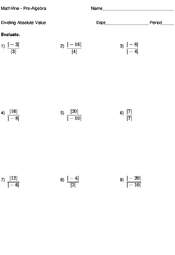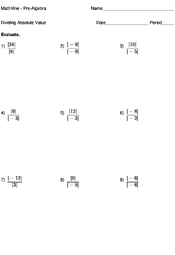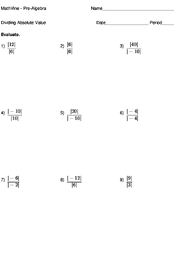Dividing Absolute Value
Introduction
Absolute value is a way of measuring how far a number is from zero on the number line. Absolute value is a measure of distance, not direction, so all absolute values are positive. To measure absolute value, you need to count how ‘far’ the number is from zero. Absolute values are written with | | either side of the number. The absolute value of x is written as | x |.
Positive numbers have the same absolute value as the number’s value. For example, the number 4 is 4 units away from 0, so | 4 | = 4. The absolute value of negative numbers is the number without the negative sign. –5 is 5 units away from 0, so the absolute value of -5 is 5.
Absolute values are always positive numbers.
Terms
Lesson
To divide absolute values, you need to first calculate the absolute values of the terms individually.
For example, in the equation below:
We need to first calculate the two absolute values. The absolute value of | 24 | is the distance of 24 from 0, which is 24 (remember, positive values have the same absolute value).
Next, we need to calculate the absolute value of | -6 |. -6 is 6 units away from 0 on the number line, so it has an absolute value of 6. Another way to remember this for negative numbers is to just remove the negative sign.
So now we have:
This is now a regular division equation. 6 goes into 24 four times, so the answer is 4.
Remember to solve the absolute values first in the order of operations and then you can solve the equation like a regular division problem.


